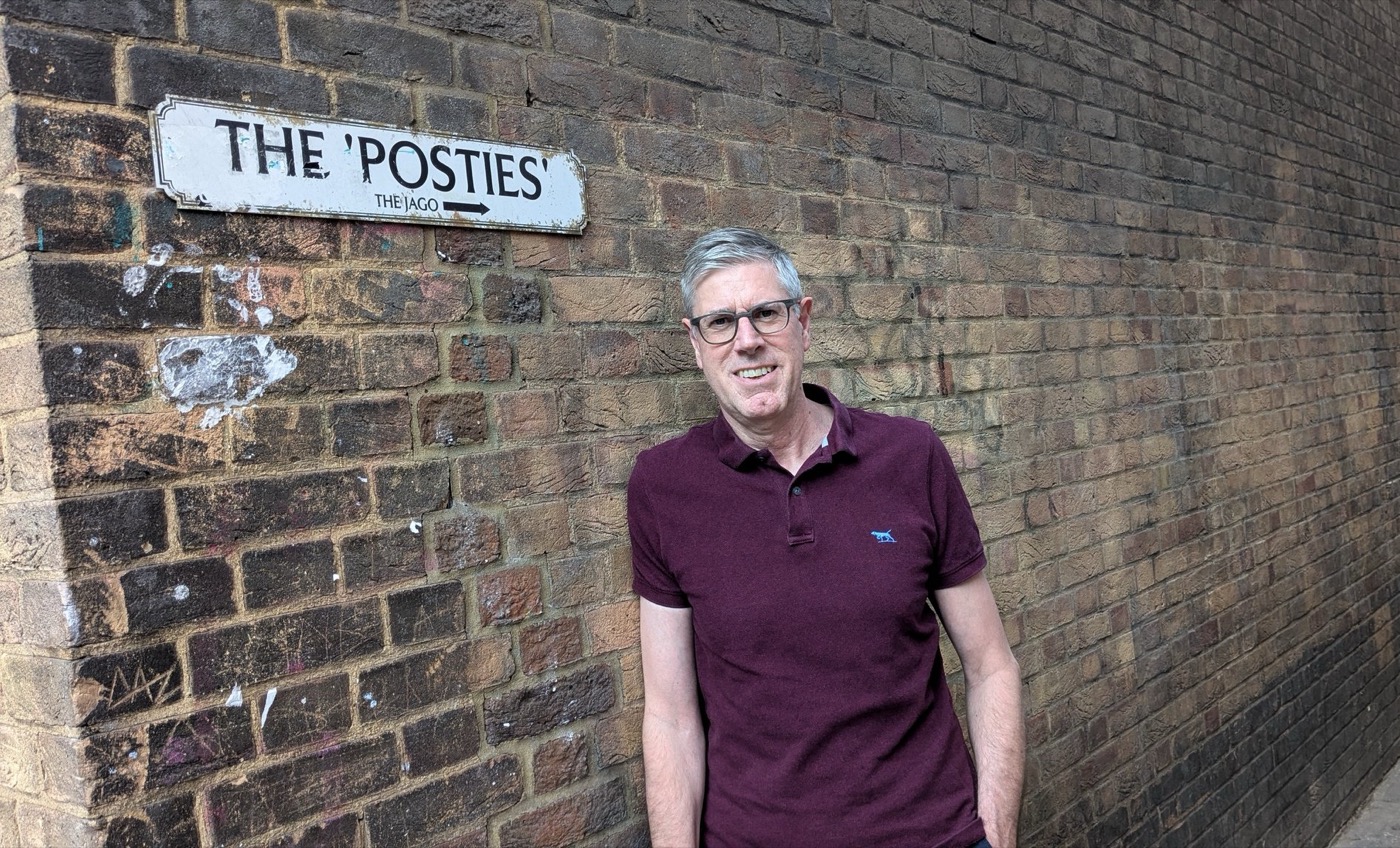Shoreditch has always been a place where reality blurs with legend, and Huw Jones’ audiobook, The Last Director of Shoreditch, dives deep into its eccentric past and present. Originally published in 2016, the novel has been updated to reflect the rapid transformation of Shoreditch and is now available on Audible, narrated by actor Daniel Crespin. Blending fact with fiction, the story introduces us to real-life figures like Shirley Pitts, the infamous ‘Queen of Shoplifters’, while uncovering the neighborhood’s gritty history and its evolution into today’s creative, tech and fashion hub.
What initially sparked your interest in Shoreditch’s history, and how did you decide to weave together the real-life eccentricities of the area with a fictional narrative?
I first moved to Shoreditch in 2011 and what struck me straight away was the sheer energy of the place. It was packed with young people wanting to find themselves, to make their mark at fintechs and start-ups, and not just to visit the great bars and restaurants.
The energy was so infectious that I wanted to channel it in some way. I found a way after hearing about the Boundary Estate, now a listed conservation area. It was Britain’s first public housing, built on the site of the former Old Nichol slum that was torn down with the help of Victorian philanthropists. Unfortunately, the people who lived in the slum were pushed out and not allowed to return to the new social housing. That unfairness hatched a plot in my mind about how those discarded people fought back, inspired by real persons, buildings and canals.
History is never far away in Shoreditch, and I remember one reader who lives in the Boundary Estate telling me that when he moved in during the 1980s, a neighbour of his had been a chauffeur for the Kray Twins!
Your book features characters inspired by actual residents, including the infamous Queen of Shoplifters, Shirley Pitts. How did you approach researching and integrating these larger-than-life figures into your story?
Shirley Pitts, who died in 1992, was an amazing character and the story is that she was buried in a Zandra Rhodes dress that had not been bought over a counter! Lorraine Gamman’s ‘Gone Shopping’ biography details how she organised shoplifting trips to Amsterdam, Paris and Geneva. You couldn’t make the stuff up. Frank, another major character in The Last Director of Shoreditch, is also inspired by a real life person. I avoided doing too much research as these people as they were more of a launch pad for my own imagination to run free.
Since its original publication in 2016, Shoreditch has undergone rapid changes. What were the key updates you made to capture the current spirit and evolution of the area in the new edition?
The speed of change in Shoreditch is breathtaking – many of the buildings I mention have changed use or simply disappeared, although the massive Goodsyard development has yet to be started. Feedback from readers to the first edition and a desire to turn it into an audiobook led to an update, which is shorter and punchier, and ties up some of the loose ends people had asked about. How many of us were vaping and talking about AI in 2016?

The narrative bridges decades—from the gritty reality of the 1950s to the modern era of fintech warriors and fashionistas. How do these contrasting time periods interact within the story to reveal the layered identity of Shoreditch?
The story in the mid 1950s is about how the Posties, the people kicked out of the Old Nichol slum (I borrow their name from the novel, The Child of the Jago by Arthur Morrison) fight back by taking over old wharves and warehouses along the canal and off Shoreditch High Street. The modern era weaves in the consequences of those actions and linkages between the two time periods. The chapters are short and punchy to keep up the momentum
Shoreditch is known for its quirky history, like pioneering recycling efforts and even housing a ‘dust destructor’ that predated modern environmental initiatives. How do these unusual historical details contribute to the novel’s atmosphere?
Spoiler alert! During the 1950s, there was a ‘dust destructor’ in Hoxton to burn waste to supply electricity to the local area. In the novel, let’s just say it plays a key role in getting rid of evidence. The building is still there on Coronet Street with its inscription ‘E Pulvere Lux et Vis’ (light and power from dust), and now houses the National Centre for Circus Arts.
Transitioning The Last Director of Shoreditch into an audiobook narrated by actor Daniel Crespin adds a new dimension to the experience. How does hearing the story bring out different aspects of Shoreditch’s character compared to reading it?
More and more people are turning to audiobooks rather than paperbacks or Kindle and it’s easy to understand why. Daniel Crespin’s training as an actor deftly brings out the different personalities and their accents in a convincing and entertaining way, making the story more immediate and real.
Your narrative touches on socio-economic themes, such as the impact of urban development on communities like those once displaced from the Old Nichol slum. What insights or messages do you hope listeners and readers take away about the transformation of Shoreditch?
A key message is that when you begin to price out longstanding locals and their families, the area starts to lose some of its character. Shoreditch and the East End still have bags of character – you only have to visit other parts of London to appreciate that – but change has to be managed sensitively.
Reflecting on your journey as a storyteller, how has your personal connection with Shoreditch influenced the way you depict its evolution—from its bohemian past to its modern, cutting-edge persona?
I have lived in the heart of Shoreditch for nearly 15 years, and in the East End for even longer. You see how the area changes in front of your eyes from day to day as soon as you step outside the door of your flat. It would be impossible not to absorb all that change and energy without any impact on how you think and act.





